I see the future of hypertext fiction evolving as a literary form that will become much more accessible for people. I think that it’s a given that everyone has the ability to write hypertext, but not everyone is aware of hypertext, thus creating a genre that is somewhat rare. Since Twine is such a streamlined software, that I can see it’s popularity growing even more throughout the years, as us and technology evolves. The link-based structure and nonlinearity of hypertext allows artists to express their ideas in a way that comes as close to entering their individual thought process as possible. Nonlinearity has been around since the Soviet Montage Theory of the 1920s and has only evolved since then, and will continue to do so. Nonlinearity has been expressed through literature, film, etc. and I believe it has a place in every art form.
Category: Student Blogs
The Future of Hypertext
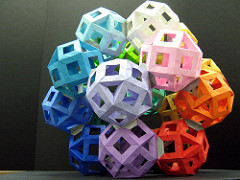
As one who is coming late to the genre of electronic literature, and thus to the form of hypertext fiction, the genre and form are still exciting to me. I may have less than a dozen Twine stories under my belt and my stories are utterly simplistic compared to what others have done, but I still feel curious and inspired when it comes to hypertext fiction. I like to imagine that others feel the same. Truthfully, I don’t have to imagine. Electronic literature as a field of study is still fairly new, and Rettberg’s book is one of the first real academic works on the subject. It was highly anticipated, and that’s because people are still very much interested in it; its forms, function, origin, and future.
The form of hypertext, using the word “form” loosely here, is almost neurological in nature. Just as neurons in the brain form bridges between like items based on association, hypertext fictions jump around with the author’s thoughts. Shelley Jackson described her writing style as “related fragments with no overarching design” (1998) and likened her creative process to stitching a quilt “where each patch is itself a patchwork.” In this way, I feel very like Marshal McLuhan’s “the medium is the message” is validated. The form is part of the story, and it’s intentional. The fragmentation in hypertext very much echoes the way we think in the digital age, clicking links to move between thoughts and gain more information, while our brain struggles to categorize and sort the date into a big picture that makes sense. In this way, hypertext accomplishes what print cannot, and it forces us to grow as readers. If this cycle continues, with writers and readers growing and adapting to ever-changing forms of writing (and I don’t see how it couldn’t) I think the future of hypertext could be even more interesting than its history.
Hypertext over Print
The non-linear nature of hypertext fiction can express more than print can due to the nature of randomness and the arbitrary connections readers create while reading a nonlinear story. Randomness refers to mathematically random sequences, made possible by programming. The word arbitrary refers to decisions or connections made for no specific reason or a not necessarily relevant reason, decisions made by a human. When a story is reordered and put into a nonlinear form that can be regenerated again and again through the use of programming, the reader makes sense of the story in different ways every time. New stories can be formed in the mind of the reader with the same text be formed in different orders, or by new text being created and inserted into a preexisting story. The hyperlinked nature of electronic literature allows viewers to “choose their own adventure” combining the random aspect of programming with the arbitrary nature of the reader’s choices, allowing the story to be rewritten in almost an infinite number of ways.
Electronic literature’s uses the properties of a computer, programmability and the network, creates literature that could not exist in print
Change is only a matter of Time: Hypertext
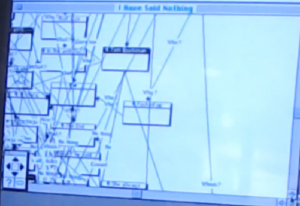 The change from traditional text to hypertext has only happened in the past decade with the advent of the medium as a whole. While hypertext new to the realm of storytelling I don’t think it will have as much of an impact as traditional books did. the use of hypertext has changed our culture and world really, like what was stated in Rettberg how hypertext introduced multilinearity to society. All of us in class grew up with the traditional book but have all learned how to use and interact with hypertext. this doesn’t mean that we all like one or the other better but it will be interesting to see younger generations as they grow up with both forms of storytelling what they will gravitate towards. whether we will all but abandon the traditional style of storytelling or if there will be a balance that happens. the latter is more likely. As well as how we interact with hypertext will change in time and who knows where it will go.
The change from traditional text to hypertext has only happened in the past decade with the advent of the medium as a whole. While hypertext new to the realm of storytelling I don’t think it will have as much of an impact as traditional books did. the use of hypertext has changed our culture and world really, like what was stated in Rettberg how hypertext introduced multilinearity to society. All of us in class grew up with the traditional book but have all learned how to use and interact with hypertext. this doesn’t mean that we all like one or the other better but it will be interesting to see younger generations as they grow up with both forms of storytelling what they will gravitate towards. whether we will all but abandon the traditional style of storytelling or if there will be a balance that happens. the latter is more likely. As well as how we interact with hypertext will change in time and who knows where it will go.
The Potential of Hypertext

I grew up mainly reading conventional books under parents that really pushed traditional print material. I was fascinated by how in kids’ books, the words and pictures were directly connected to one another. Both paint an image of what the characters are doing and how they look. Still very early on in my life I was introduced to pc software and went on to interact with both print and digital stories for a while. As I have gotten older though, digital stories have taken over my life. Video games especially have been my go-to for the most immersive stories and worlds. Honestly, print-based media has been relegated to text books for me. I believe the potential of the print-based media itself has reached its full potential. Actual stories themselves though have all the potential in the world. Hypertext and the digital medium in general can provide elements for a story that print cannot. Hypertext can surprise readers through links and present them with changing environments through pictures, video and sound. There could be a real social aspect and the stories can be updated with new additional chapters and other content. If someone feels that print is too limited for their story, they may find the affordances of digital hypertext to be a better suit and let out their creativity that way.
“I want my fiction to be more like a world full of things that you can wander around in, rather than a record or memory of those wanderings.”(Jackson)
Print vs. Hypertext
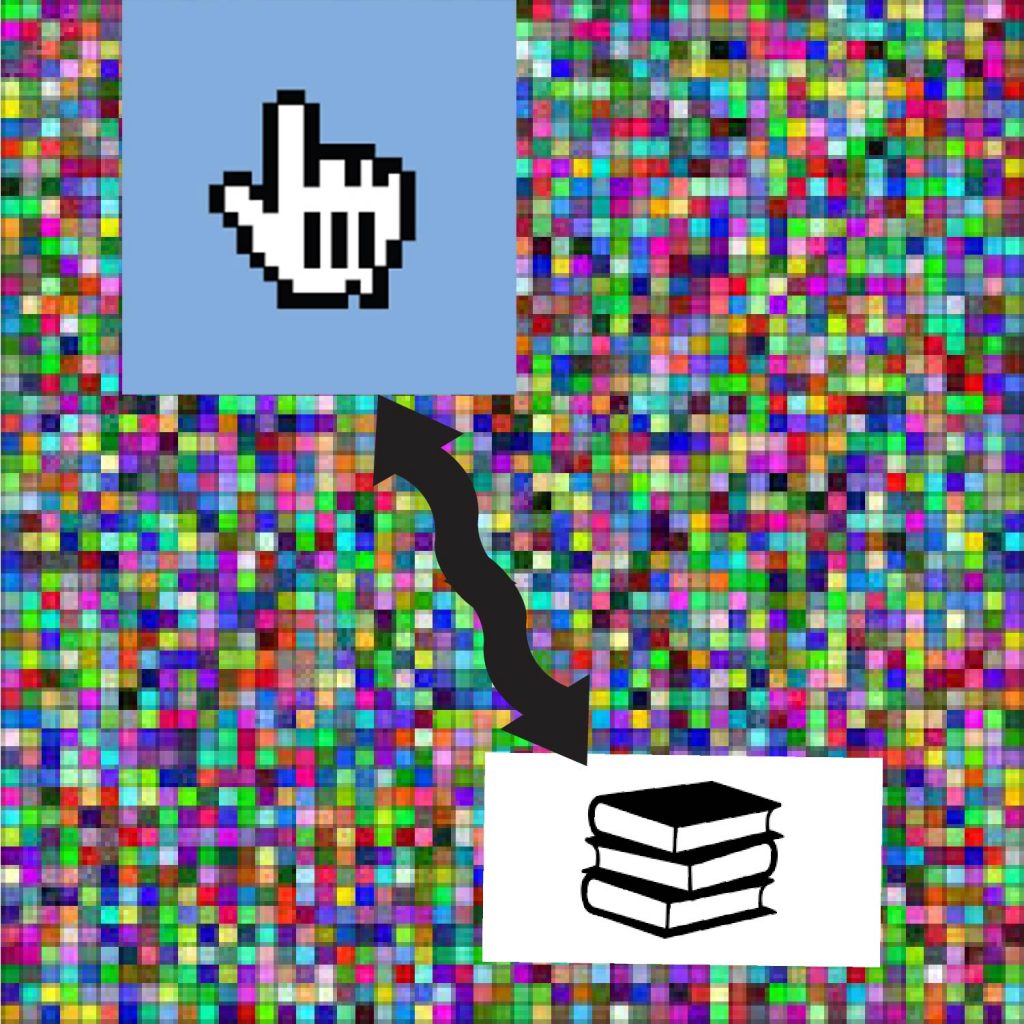
“The difference between reading hyperfiction and reading traditional printed fiction may be the difference between sailing the islands and standing on the dock watching the sea. One is not necessarily better than the other.”
-Carolyn Guyer and Martha Petry Izme Pass
I liked this quote in the reading’s this week. I don’t think we can really say that either of these forms of writing will die out. Both of them have their own place in the literary world. While print may seem like the slow and steady that wins the race, hypertext is the one coming up with multiple paths the race could take.
As technology changes hypertext does too, with new ways to tell the story. With recent uses of hypertext in television and video games, one wonders what the next step is for it?
I think that hypertext does have something different to contribute, that gives a unique experience to the reader. If it’s a nonlinear story the reader has the choice to go back and change the ending if they don’t prefer the one that they got. Or just go back and see what were the other possibilities.
In the reading Why no one clicked on the great hypertext story, I liked how it highlighted the growing hypertext writing that is being seen on different social platforms. In one of my other classes, we talked about this platform, where people come and add to these time travel/ romance themed stories. The stories take crazy turns, but it is a very popular space that people come to share ideas.
My only concern with hypertext along with print is the waning attention span that we seem to have when it comes to reading. It seems that most people take in their stories and information through five-minute clips on the internet. I think the question that needs to be addressed is will society still be willing to take the time to discover these works?

3 – Hypertext fiction
I would have to agree that hypertext fiction does not appear to be as prevalent in today’s era of social media. I admit I was not even aware of hypertext fiction until this class. However, considering what we have experienced and read in class and for assignments thus far, I do hope that hypertext fiction is able to maintain a presence amongst social media. As a writer by hobby, it inspired an angle of creativity that I had never experienced before, the idea of hierarchies, and linking parts to each other. Shelley Jackson spoke of having bits and pieces of her works, characters, and drawings, and just hoping to find a connection between any of them, and when nothing clicked, she would mix it all up and try again. I understood where her approach came from, as I myself often begin just by writing anything and everything that comes straight to mind of what I think I know, however, my brain then thinks far too linearly and tries to make sense of an idea I already had when I started. Hypertext fiction, I think, brings to a writer’s mind firstly, the many layers that can be used and how infinite the hierarchy of a story can be, given all the routes one can take. Secondly, the idea of linking sections together is can speak to the story and its characters itself (“The medium is the message”). The method that Jackson mentioned has a way of jumbling up the conventional and sometimes automatic, or cliche, and that is something that this era needs, where often our words are limited to 200 characters (or whatever it is now). Not that I would consider a single “Tweet” as hypertext fiction, but my generation has gotten so used to that way of communicating that hypertext fiction can continue to bring inspiration, and hope it does.
The Future of Hypertext
It has come to my opinion that Hypertext Fiction is unique in a way that let’s the reviewers or the readers think. And really think hard about the decisions that has to be made throughout the journey that they are going on. Whether it’s print or digital it has the potential to have us stop and think about if our choice was correct or not.
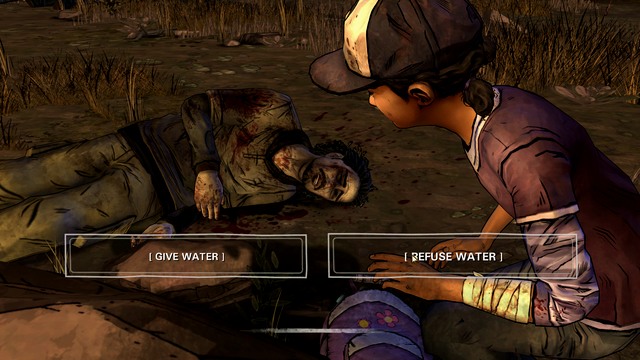
The choices or even the action that we do make us believe about the ominous outcome of the situation that we where put in and let us to believe that in the end… no choice is 100% good.
The future of Hypertext Fiction, to me, is a little bit unclear at this point. I do believe that Hypertext Fiction is a very well-known genre of storytelling that has the potential to go much further then it is at. For years hypertext Fiction has been growing in books as well as digital media but not necessarily in it’s own form but more of
“Instead of prospering as a specific genre in it’s own right, elements of hypertext have opened up new forms and genres. Complex multilinear narrative structures have for example become standard fare in long-term episodic television series.”
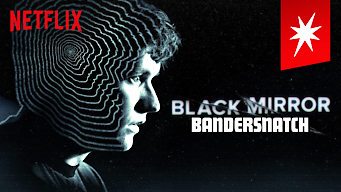
So in conclusion I do believe, in a literal sense, Hypertext Fiction can continue making a huge impact on all of us even if it’s in forms of other types of media but thanks to this program called Twine. everybody can bring there multilinear imaginations to life and expand as far as they want to go.
Sources:
Image caught from “Telltale’s The Walking Dead: Season Two”
Image caught from “Black Mirror: Bandersnatch”
Scott Rettberg’s “Electronic Literature”
Future of Hypertext?
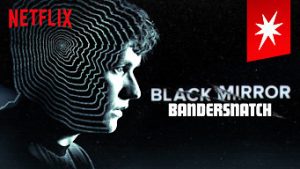
It’s hard for me to say what I think the future of hypertext fiction will be. I don’t think it will die out, as there will always be people and pieces of work that will keep the genre alive. I do however, think that it will dip in and out of popularity as the years go on and as more technology is developed. In the past, hypertext fiction is something that has repeatedly grown popular for a short while, only for it to die down and come back again later. The best example I could come up for this is the company Telltale Games, a gaming company that exclusively creates “Choose Your Own Adventure Games”, or works of hypertext fiction. This company became increasingly popular a couple years ago, to the point of creating stories for big names and other game companies. The Walking Dead, Minecraft, and Batman are a few series’ who got their own Telltale Games. Although all their games got generally favorable reviews, and fans loved playing them, on September 21st, an announcement was made that Telltale Games would be shutting down. The reason? Not enough people were interested in and buying the hypertext fiction genre of video games. Unfortunately, no matter how well something is made, if there isn’t an audience to watch/play/listen to it, then it becomes unprofitable and will come to an end.
I really enjoy hypertext fiction. I like the idea that you decide the outcome of the story, and that your choices truly affect what happens. I do think for a work of this genre to be enjoyable, it needs to be done the right way. If there’s too many or too little options, or the story becomes so meddled and confusing that there doesn’t seem any point in continuing, then it becomes more work than enjoyment. Since a story with multiple storylines can be difficult to properly write out and execute correctly, I feel like this is the image that hypertext fiction often gets. Like I said before, I don’t think hypertext fiction is going to die out (at least anytime in the near future), but I also don’t think it’s going to get extremely popular in the near future. Even newer medias such as Bandersnatch seem to have excitement for a few weeks, and then the whole genre gets lost in the depths of the internet again.
Hypertext definitely goes somewhere that regular print cannot. Print books in the past have been “Choose Your Own Adventure” books. However, the constant flipping of the pages, and navigating through the big piece of text is a lot more frustrating than just being able to click on a particular link in a story and get to the next point. If one were to create a hypertext fiction piece of work, I think most of the time one would lean toward creating it on a digital medium. The evolution of technology and hypertext as one have created this genre of fiction that is compelling, exciting, mysterious, but unfortunately, not very popular.
My Boyfriend Came Back from the War
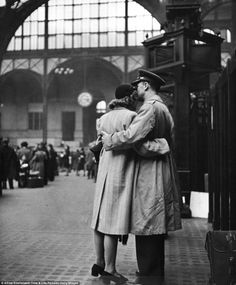
After (at least partially) reading all three of the net.art fiction pieces, I decided to focus on My Boyfriend Came Back from the War by Olia Lialina. I was struck by the stark and emotive quality of this piece, as well as the literal and figurative fragmenting of the narrative. While it doesn’t have have the randomized quality of combinatory poetics per se (reloading the page or clicking in different orders did not change which piece of text came after which), it does achieve a state of multilinearity and variability by virtue of the aforementioned fragmentation. As the narrative and screens continue to break down, the reader can choose to follow one thread until its end before moving onto the next, to click each panel in an order (say, clockwise), randomly, or a combination thereof. I read through it a few times in different orders and while the overarching story is the same, different reading orders do lend different tones to the narrative.
I think that this piece is particularly different from the hypertext fiction we looked at last class in that it is all contained on one page, and it is impossible to step backwards (except by completely refreshing the page and starting over). In Joyce’s the afternoon, the reader moves from one concrete page to the next, albeit in nonlinear and sometimes indirect ways, and can return to previous pages. In contrast, readers of Lialina’s My Boyfriend Came Back from the War must continue forward on one fluid page. I think this technique places the reader deeper into the mindset of Lialina’s story, as it is close to how we experience real life (unable to go back, and while sometimes fragmented, still part of a solid whole).
Dylan Niehaus – Hypertext Fiction

Hypertext fiction is a genre of electronic literature that I find to be quite interesting, and it seems to be a growing although niche genre of writing that is gaining attention on the web. I visited the website itch.io, which is a website for indie game developers to share their works with others. Within that site, there is a “twine” tag which leads to games that follow the basic frameworks of hypertext fiction. I do think hypertext fiction is present and actually quite popular, but not in the way that many may think.
“It’s not that hypertext went on to become less interesting than its literary advocates imagined in those early days. Rather, a whole different set of new forms arose in its place: blogs, social networks, crowd-edited encyclopedias.” – (Steven Johnson 2013)
Going off of that quote from Steven Johnson, I think there is another, more evolved form of hypertext fiction that is quite popular these days, and those are indie video games which are focused mainly on telling a narrative through the player moving an avatar to different locations. Think about it – instead of simply clicking on a link to read a snippet of text which reveals more about a story, you are interacting with a virtual environment to read that snippet of text, or hear the dialogue from a character. This is hypertext fiction that has been evolved to better engage the reader with a more visual and audible style. Despite this, hypertext fiction in its base form has a following as well. I found many games on the itch.io site that were based in twine and only used text hyperlinks to advance the story. I think that hypertext fiction is much more popular than we know it, mainly because it has evolved into graphic adventure video games in which the user can use an avatar to explore their own narrative path. Hypertext fiction can definitely do things that print cannot. It may be possible for a print story to take a reader on multiple narrative paths, but it would not be a user-friendly experience. Hypertext fiction allows the author to build a world that the user explores at their own pace and order, giving the user a special feeling of their own control, like they are exploring the world in the way in which they want to. With the popularity of user choice in media, I feel that hypertext fiction has a strong future in our world of literature.
Hypertext and “The Babysitter”

Robert Coover’s short story “The Babysitter” is a fragmented set of stories about the same set of characters that plays out in pieces where each story line and outcome, as there are several, are equally as likely to have happened. The story is meant to be read from page one to the end, and it follows a set timeline of a few hours over the course of one evening, but the text is broken up into chunks and separated with characters that signify a break in the story line. Perspectives shift, character focus shifts, but the timeline of 7:40 to 10:00 pm remains constant. The reader progresses through the evening, visiting each of the main characters in several different “alternate realities.” The reader does not know which narrative is the “actual” and which are “alternates,” or perhaps none are real and all are just possibilities.
“The Babysitter” was published in 1969, and while it wasn’t the first work intended to be read in a multi-linear manner, it had a heavy influence on writers who came later, especially those creating hypertext stories that explored the same story from multiple points of view. The structure of “The Babysitter” is like a branching tree, each possibility stemming from the same set of events. This type of branching text creates a very meta experience for the reader, who is aware of how the stories keep changing, and how this one piece of writing is really multiple pieces. Rettberg calls this type of text “reflexive” and ties it to works that came later that also explore fragmentation as a structure that helps to guide, or disrupt, the reader’s experience.